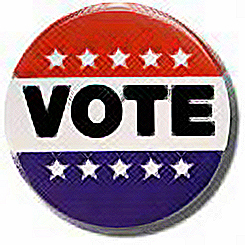
Any citizen of the United States over the age of 18, and who meets certain state requirements, may vote in Federal elections. This has not always been the case. When the United States first won its independence, there were many restrictions on who could vote. In some states, only white male landowners over the age of 21 could vote. Beginning in 1870, however, a series of Constitutional Amendments (15th, 17th, 19th, 23rd, 24th, and 26th) and passage of certain pieces of legislation have extended voting privileges to more and more citizens.
It is everyone's civic responsibility to vote, but in order to do so you must be registered. Requirements for registration and registration deadlines vary from state to state and the District of Columbia. North Dakota is the only state that does not require voters to register.
Voter Registration Forms
Registration forms may be obtained from the local election officials in your county or from the state's election office. You can also register to vote when applying for services at:
- state departments of motor vehicle or drivers' licensing offices
- state offices providing public assistance
- state offices providing State-funded programs for the disabled
- armed forces recruitment offices
In addition to these locations, many states offer registration opportunities at public libraries, post offices, unemployment offices, public high schools and universities, and through organizations such as the League of Women Voters.
The National Mail Voter Registration Form is the one document that allows you to register to vote from anywhere in the United States. While the form is available online and accepted by most states, not all states accept a computer generated form. Get the answers to all your registration questions and the form from the Federal Election Commission's (FEC) Web site. www.fec.gov
 Print
Print Email
Email







